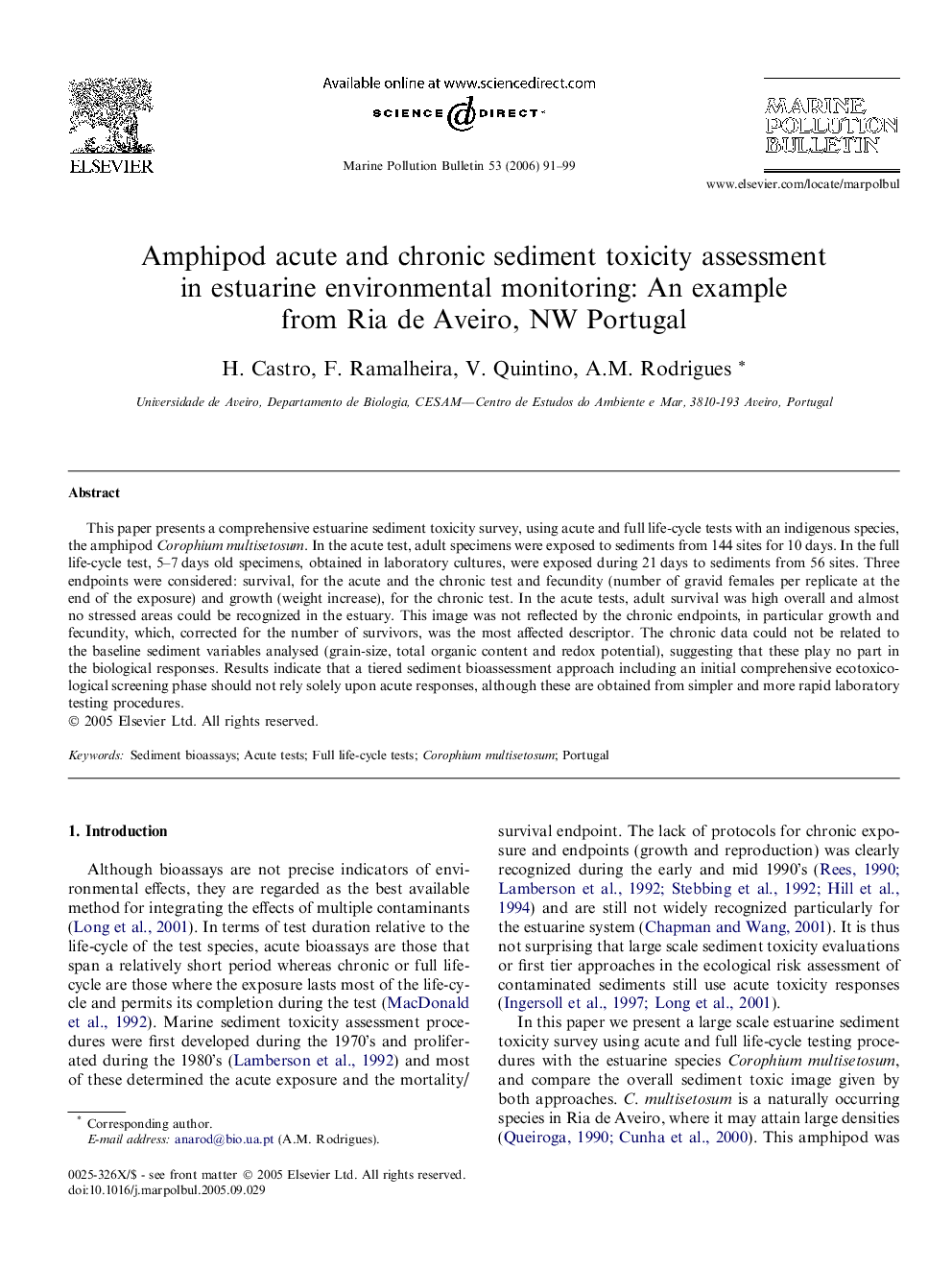| Article ID | Journal | Published Year | Pages | File Type |
|---|---|---|---|---|
| 4477789 | Marine Pollution Bulletin | 2006 | 9 Pages |
This paper presents a comprehensive estuarine sediment toxicity survey, using acute and full life-cycle tests with an indigenous species, the amphipod Corophium multisetosum. In the acute test, adult specimens were exposed to sediments from 144 sites for 10 days. In the full life-cycle test, 5–7 days old specimens, obtained in laboratory cultures, were exposed during 21 days to sediments from 56 sites. Three endpoints were considered: survival, for the acute and the chronic test and fecundity (number of gravid females per replicate at the end of the exposure) and growth (weight increase), for the chronic test. In the acute tests, adult survival was high overall and almost no stressed areas could be recognized in the estuary. This image was not reflected by the chronic endpoints, in particular growth and fecundity, which, corrected for the number of survivors, was the most affected descriptor. The chronic data could not be related to the baseline sediment variables analysed (grain-size, total organic content and redox potential), suggesting that these play no part in the biological responses. Results indicate that a tiered sediment bioassessment approach including an initial comprehensive ecotoxicological screening phase should not rely solely upon acute responses, although these are obtained from simpler and more rapid laboratory testing procedures.
